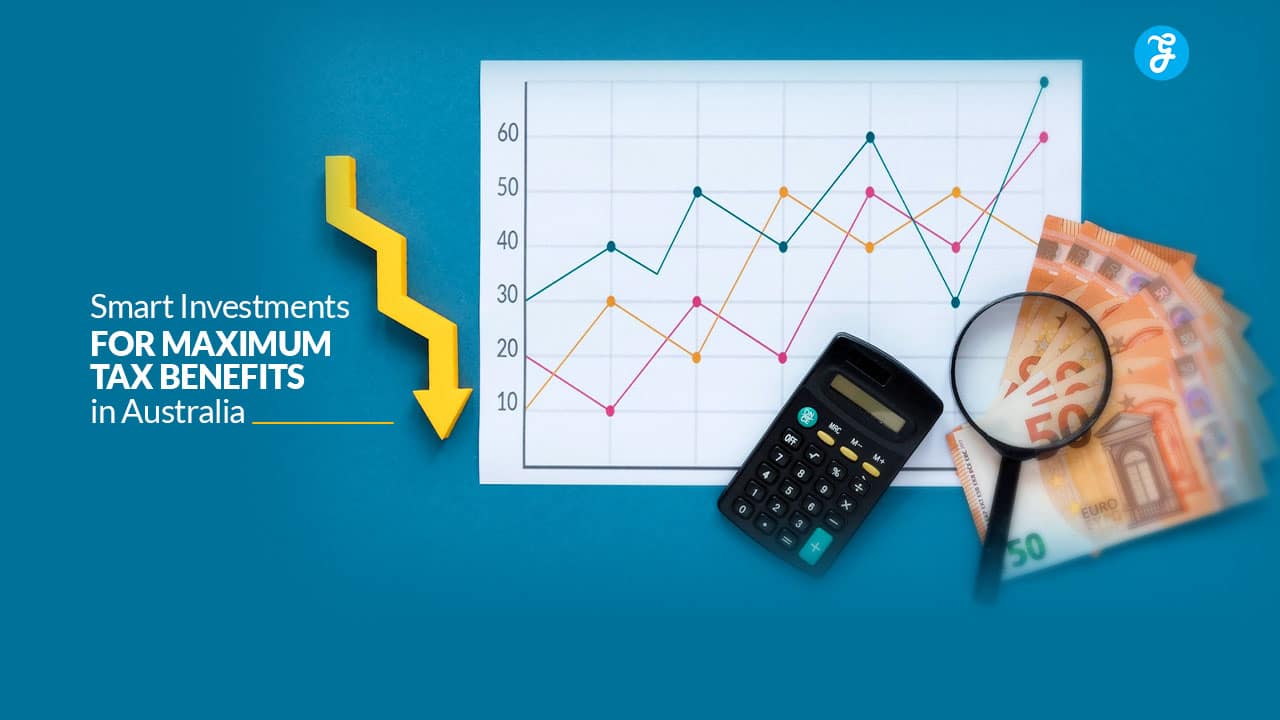Investing strategically not only grows your wealth but also helps reduce your tax liabilities. In Australia, the government provides several incentives and schemes to encourage people to invest in specific sectors and financial instruments.
By understanding and leveraging these opportunities, you can save money while building a secure financial future.
This article explores 10 smart investments in Australia that offer maximum tax benefits. From superannuation contributions to property investments, we break down each option, explain its tax advantages, and provide actionable insights to help you make informed decisions.
Whether you’re a seasoned investor or a beginner, this guide will empower you to take control of your finances effectively.
1. Superannuation Contributions
Superannuation, Australia’s retirement savings system, is one of the most tax-efficient investment options available. It allows individuals to secure their financial future while enjoying immediate tax advantages.
Pre-tax contributions, such as salary sacrifices, are taxed at just 15%, which is much lower than the marginal tax rates for most Australians. This means you can lower your taxable income while growing your retirement savings.
Furthermore, after-tax contributions enable your investments to grow tax-free within the fund. With added government incentives like co-contributions for low-income earners, superannuation provides a comprehensive strategy for both wealth accumulation and tax minimization.
Tax Benefits:
- Concessional Contributions: Contributions made pre-tax (salary sacrifice or employer contributions) are taxed at 15%, which is lower than most individuals’ marginal tax rates.
- Non-Concessional Contributions: After-tax contributions are not taxed within the super fund, allowing your investments to grow tax-free.
- Co-Contributions: The government may match up to $500 for eligible low-income earners.
Contribution Limits (2024-25):
| Type of Contribution | Annual Limit |
| Concessional | $27,500 |
| Non-Concessional | $110,000 |
How to Maximize Benefits:
- Use salary sacrifice to stay within concessional limits.
- For high-income earners, consider splitting contributions with a spouse to manage tax more effectively.
- Consolidate multiple super accounts to reduce fees and maximize returns.
2. Negative Gearing on Investment Properties
Negative gearing is a widely used tax strategy in Australia that allows property investors to offset rental property losses against their other income. This strategy makes property investment more affordable, particularly for high-income earners, as it reduces overall tax liability.
By deducting expenses like mortgage interest, property management fees, and maintenance costs, investors can turn short-term losses into long-term capital gains.
Additionally, properties in high-demand locations tend to appreciate over time, providing significant financial returns. Negative gearing not only helps you build a property portfolio but also minimizes the upfront financial burden through tax benefits.
Tax Benefits:
- Deduct expenses such as mortgage interest, property management fees, maintenance costs, and depreciation.
- Reduce taxable income, especially for high-income earners.
Example of Tax Savings:
| Annual Rental Income | Expenses (Including Interest) | Net Loss | Tax Savings (37% Rate) |
| $20,000 | $30,000 | -$10,000 | $3,700 |
Considerations:
- Focus on properties in high-demand areas to ensure long-term capital growth.
- Keep detailed records of all expenses for tax purposes.
3. Shares and Dividend Imputation
Investing in shares with dividend imputation is an effective way to maximize returns while minimizing tax obligations. Dividend imputation credits, or franking credits, eliminate the double taxation of company profits.
Shareholders receive tax credits for the corporate tax paid on dividends, which can offset their personal income tax liability. This system is particularly beneficial for low- or middle-income investors who may even receive a refund if their tax rate is lower than the corporate rate.
Long-term shareholding also allows investors to benefit from capital gains tax discounts, making shares an attractive option for building wealth.
Tax Benefits:
- Franking Credits: Shareholders receive a tax credit for the tax already paid by the company on its profits. This can offset your personal tax liability.
- Lower Tax Rates: If your marginal tax rate is lower than the corporate tax rate, you may receive a refund.
Example of Franking Credits:
| Dividend Received | Franking Credit | Total Taxable Income | Tax Payable (37%) | Tax Offset |
| $700 | $300 | $1,000 | $370 | $300 |
Tips:
- Look for shares of companies with a consistent history of paying fully franked dividends.
- Diversify your portfolio to minimize risk.
4. Managed Funds and ETFs
Managed funds and ETFs (Exchange Traded Funds) offer a convenient and diversified approach to investing, making them ideal for both beginner and experienced investors.
These financial products pool money from multiple investors to purchase a variety of assets, spreading risk across different sectors and markets. From a tax perspective, investments held for more than 12 months are eligible for a 50% capital gains tax (CGT) discount.
Additionally, some ETFs and managed funds distribute franking credits to investors, further enhancing tax efficiency. With professional management and low entry costs, these funds simplify investment while optimizing tax savings.
Tax Benefits:
- Capital Gains Discount: Investments held for more than 12 months are eligible for a 50% discount on capital gains tax (CGT).
- Tax-Efficient Distribution: Some funds focus on tax-efficient strategies, such as distributing franking credits.
Key Features:
| Investment Type | Minimum Investment | Tax Efficiency |
| Managed Funds | $5,000 | Medium to High |
| ETFs | No Minimum (Broker Required) | High |
Pro Tip:
Choose funds aligned with your financial goals, and consider reinvesting distributions to maximize compounding returns.
5. Insurance Bonds
Insurance bonds are a unique investment option that combines savings with insurance, offering long-term tax advantages. These bonds are taxed at a flat rate of 30% within the bond structure, potentially lower than your marginal tax rate.
If held for more than 10 years, no additional tax is payable on earnings, making them an attractive option for wealth accumulation. Insurance bonds are also useful for estate planning, as they allow for smooth asset transfer without probate delays. With flexible contribution limits and automatic reinvestment of earnings, they provide a hassle-free way to build wealth tax-efficiently.
Tax Benefits:
- Investment earnings are taxed at 30% within the bond, which may be lower than your marginal tax rate.
- No additional tax payable if held for more than 10 years.
Key Features:
| Feature | Benefit |
| Tax-Paid Earnings | Reduces personal tax liability |
| Long-Term Growth | Ideal for estate planning |
Who Should Invest:
- High-income earners looking to reduce their taxable income.
- Parents or grandparents investing for children.
6. Small Business Tax Incentives
Small business owners in Australia have access to a variety of tax incentives designed to support growth, innovation, and job creation. These benefits include the Instant Asset Write-Off, allowing businesses to immediately deduct the cost of assets purchased under the set threshold.
Additionally, the R&D Tax Offset encourages investment in research and development activities by offering tax rebates of up to 43.5% on eligible expenditures. These incentives significantly reduce taxable income, enabling small business owners to reinvest in their operations.
Businesses can also benefit from capital gains tax (CGT) concessions when selling assets, further enhancing their tax savings.
Tax Benefits:
- Instant Asset Write-Off: Claim immediate deductions for eligible assets.
- R&D Tax Offset: Reclaim a percentage of R&D expenses.
- CGT Concessions: Access discounts or rollovers on capital gains for small business assets.
Key Thresholds (2024-25):
| Incentive | Threshold |
| Instant Asset Write-Off | $20,000 per asset |
| R&D Tax Offset | Up to 43.5% |
Pro Tip:
Keep detailed records of purchases and R&D activities, and consult a tax advisor to maximize eligibility for these incentives.
7. Trust Structures
Trusts are one of the most flexible and tax-efficient investment structures in Australia. By establishing a trust, you can distribute income to beneficiaries in lower tax brackets, effectively reducing your overall tax burden.
Trusts are also excellent tools for protecting family assets and managing wealth for future generations. Discretionary trusts, for example, allow trustees to decide how income and capital gains are distributed, enabling strategic tax planning.
Furthermore, unit trusts are ideal for pooling funds for joint investments, offering clear ownership stakes and tax efficiency. This versatility makes trusts a popular choice for high-net-worth individuals and family businesses.
Tax Benefits:
- Income Splitting: Reduce overall tax liability by distributing income to beneficiaries in lower tax brackets.
- CGT Efficiency: Trusts can distribute capital gains to beneficiaries with lower tax rates.
- Asset Protection: Safeguard family wealth from creditors or legal disputes.
Common Types:
| Type of Trust | Best For |
| Discretionary Trust | Family wealth management |
| Unit Trust | Investment groups |
Pro Tip:
Ensure compliance with Australian Taxation Office (ATO) regulations and seek expert legal advice when setting up a trust.
8. Renewable Energy Investments
Investing in renewable energy not only supports a sustainable future but also provides substantial financial and tax benefits. Australians can access rebates and tax incentives for installing solar panels, wind turbines, and other green energy solutions.
Programs such as Small-Scale Technology Certificates (STCs) allow homeowners and businesses to earn tradeable credits, reducing the upfront costs of renewable installations.
Additionally, renewable energy systems are eligible for depreciation deductions, enabling long-term tax savings. By adopting green technologies, you can lower your energy bills, reduce your carbon footprint, and enjoy financial rewards from government-supported initiatives.
Tax Benefits:
- Solar Rebates: Offset installation costs with government rebates.
- Depreciation Deductions: Write off the value of renewable assets over their useful life.
- STCs: Generate tradeable credits for renewable energy production.
Example Savings:
| Investment Type | Potential Rebate or Credit |
| Residential Solar Panels | $2,000 – $3,000 |
| Commercial Wind Turbines | $10,000+ |
Pro Tip:
Research state-specific programs and rebates to maximize your savings on renewable energy projects.
9. Education Savings Plans
Education savings plans, such as scholarship trusts, are tailored for families seeking to fund their children’s education while minimizing tax obligations. Earnings within these plans are taxed at the child’s lower tax rate, significantly reducing the overall tax burden.
Contributions to these plans can be made flexibly, and withdrawals for education-related expenses, such as tuition or books, are tax-efficient.
Education savings plans are ideal for families planning for private school or university fees and provide a structured approach to ensuring future financial stability for children.
Tax Benefits:
- Lower Tax Rates: Earnings are taxed at the child’s lower marginal tax rate.
- Flexible Contributions: Adjust contributions based on your financial situation.
- Tax-Free Withdrawals: Withdrawals used for education expenses are tax-efficient.
Who Should Consider:
- Families planning for private school or university fees.
- Grandparents looking to support grandchildren’s education.
Pro Tip:
Start early to maximize the compounding benefits of education savings plans.
10. Cryptocurrency Investments
Cryptocurrency is an emerging asset class offering high potential returns, along with unique tax benefits when managed effectively. Australian tax laws classify cryptocurrencies as assets, subjecting them to Capital Gains Tax (CGT).
Long-term investors holding cryptocurrency for more than 12 months can benefit from a 50% CGT discount. Furthermore, any cryptocurrency losses can be used to offset other capital gains, reducing overall tax liability.
With proper record-keeping and strategic trading, cryptocurrency investments can diversify your portfolio and offer valuable tax advantages.
Tax Benefits:
- CGT Discount: Apply a 50% discount on capital gains for assets held over 12 months.
- Loss Deductions: Offset cryptocurrency losses against other capital gains.
Tips:
- Use crypto tax software to maintain accurate transaction records.
- Stay updated on Australian Taxation Office (ATO) regulations to ensure compliance.
Final Thoughts
Smart investments not only grow your wealth but also provide opportunities to reduce your tax liabilities. By exploring options like superannuation, negative gearing, and renewable energy projects, you can align your financial goals with tax savings.
Each of these 10 investment strategies is designed to cater to various needs, from long-term wealth building to short-term tax efficiency.
Consult a financial advisor or tax professional to tailor these strategies to your circumstances. Start making informed decisions today and watch your investments deliver both financial growth and maximum tax benefits in Australia.
Smart planning leads to smarter savings—make every dollar count!







































